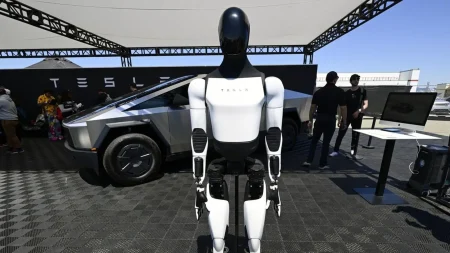Elon Musk’s xAI Forecasts Profitability by 2028 with Innovative Financing Approach
Elon Musk’s artificial intelligence venture, xAI, appears to be on a remarkable trajectory toward profitability, with forecasts suggesting the company will become cash flow positive by 2028. According to details from an investor pitch call reviewed by Forbes, the company currently maintains an impressive $10 billion cash balance while simultaneously pursuing a substantial equity raise. Jonathan Shulkin of Valor Equity Partners, who briefly served as xAI’s chief financial officer this summer, shared during a Wednesday investor call that xAI is “ramping revenue very quickly” and expects to achieve positive cash flow within approximately three years. The equity round, initially targeted at $15 billion, has reportedly generated enough interest that it “is likely to be a lot larger” than originally planned, demonstrating strong investor confidence in Musk’s AI endeavor. This timeline positions xAI more favorably than competitor OpenAI, which doesn’t project profitability until 2030, though it aligns with Anthropic’s similar 2028 break-even forecast.
The key to xAI’s ambitious growth strategy lies in securing the necessary computing infrastructure, a challenge the company is addressing through an innovative two-pronged financial approach. Like all major AI companies, xAI requires massive computing resources housed in data centers that can cost between $20-30 billion to construct. Despite its substantial cash reserves, the company needs additional funding to support its ambitious plans. The first approach is straightforward – a traditional equity raise that was initially reported by CNBC. However, it’s the second approach that represents a novel solution to the high costs associated with AI infrastructure development. xAI is working with Valor Equity Partners, founded by Antonio Gracias (a longtime Musk associate), to create a special purpose vehicle called Valor Compute Infrastructure (VCI) that purchases the essential components of data centers – primarily racks of Nvidia chips and their connecting infrastructure – which are then leased back to xAI.
This innovative financing structure, VCI, is raising $7.5 billion in cash plus approximately double that amount in debt financing from an impressive roster of investors. Nvidia has committed $2 billion to the initiative, with additional funding coming from major private equity firms including Blue Owl, Apollo, GoldenTree, and Marathon, as well as individual investors. Valor Equity Partners itself plans to commit between $75-125 million to the venture. What makes this approach particularly attractive is VCI’s plan to provide quarterly cash distributions to investors with a projected 9% internal rate of return – an appealing proposition in the current investment landscape. The scale of this initiative is substantial, with VCI planning to acquire $22 billion worth of computing resources through this financing vehicle, starting with an immediate $5.3 billion purchase of Nvidia’s GB200 systems “that are already up and running,” followed by orders exceeding $10 billion for Nvidia’s more advanced GB300 chips scheduled for early next year.
Jonathan Shulkin explained the financial rationale behind this approach during the investor call, noting that “The reason xAI is doing [the financing through VCI] primarily is for cost of capital.” He highlighted that traditional equity raises at xAI can consume between 40-50% of the funding, making it inefficient to “use equity capital to finance assets that have the ability to be financed in this way.” Shulkin characterized the VCI structure as “the lowest cost way” forward and “an innovation in the market.” This financial innovation could potentially give xAI a significant advantage in the capital-intensive race to build AI infrastructure, allowing the company to accelerate its development timeline while preserving more of its equity value. The approach represents a creative solution to one of the most significant challenges facing AI companies today – how to finance the massive computational resources required without diluting company ownership or overextending financially.
The stakes in this AI race are extraordinarily high, with companies like OpenAI committing up to $1.4 trillion for AI infrastructure deals. By potentially achieving profitability two years earlier than OpenAI, xAI could position itself as a more financially sustainable competitor in the increasingly crowded AI space. However, when contacted for comment on these developments, an xAI spokesperson provided only a cryptic three-word response: “Legacy Media Lies.” This terse reply, characteristic of Musk’s occasionally confrontational stance toward traditional media, leaves some ambiguity about which specific aspects of the reported information the company disputes, if any. Meanwhile, Nvidia declined to comment on its reported involvement, and Valor Equity Partners did not immediately respond to inquiries.
As xAI continues its ambitious journey, this innovative financing approach could represent a template for how AI companies address the enormous capital requirements of building cutting-edge systems. By leveraging a combination of equity and specialized infrastructure financing vehicles, xAI appears to be charting a course that could allow it to scale more rapidly while maintaining financial discipline. The company’s ability to secure significant investment from major players like Nvidia also suggests strong industry confidence in its technical approach and market potential. Whether this financial innovation truly delivers the projected advantages – and whether xAI can meet its 2028 profitability target – remains to be seen, but the strategy clearly demonstrates the kind of creative thinking that has characterized many of Musk’s ventures. As the AI race intensifies, with trillions of dollars at stake, xAI’s novel financing approach may prove to be as important to its success as its technical innovations.















